Evidence suggest that Yugal was settled in the begining of the Monte Alban 1 Period 500 B.C.E. It flourished as an urban center after Monte Alban was abandoned 800 C.E.. Yugal was subsequently abandoned for a short period, but then emerged as a city-state in the Valley of Oaxaca and prevailed until shortly before the arrival of the Spanish Conquistadores. It was settled by Zapotecs, who still populate much of the Tlacolula Valley.
This important prehispanic center, whose name literally means "Old Stick" or "Old Tree", contains the largest ballcourt in the Oaxaca Valley, and the second largest in all of Mesoamerica.
There are three parts to this fortified site. In the center, staircases lead from an enormous man-made platform to the temples and main palaces. The acropolis containing an atalaya grantica overlooks the site and the rest of the Tlacolula Valley. The view of the Tlacolula Valley from the defensive walls above the site is unequaled. Stairs lead up toward the mountain, where the majority of the town's population lived. A relatively unexplored region on the other side of the river south of Yagul contains a small palace with grecas and other modest residences.
The site's architecture is similar in many ways to that of Monte Alban. It's Palace of Six Patios is almost identical to the Group of the Columns at Mitla. This enormous labyrinth-like structure was inhabited by the ruler, or rulers, of Yagul. This has been totally excavated, and surrounding the six patios are rooms with one or three entrances. The walls are made of stone and clay covered with stucco; the floors are made of red stucco. Some rooms were most certainly closed when the building was occupied. There is a throne in the northwestern patio of the southern room.
To the west of these patios lie cruciform tombs. Of these, the best known is the triple tomb in the patio known as the Frog, or Sunken Patio. The plaza containing the Patio of the Triple Tomb is surrounded by four temples. In the lower part of the eastern temple is a colossal monolith with an animal figure that may be a frog or a jaguar. An opening leads to the Triple Tomb. The stone facade of the principal tomb is decorated with engravings of two magnificent human heads. The door to the tomb is a slab containing hieroglyphic motifs on both sides.
On a long, narrow street to the south of the Palace of the Six Patios one finds stone mosaics identical to those at Mitla. The stone floor was quarried from the mountain. This streets ends in a long, narrow room known as the Sala de Consejo (Council Chamber) which was previously decorated with stone mosaics that have since disappeared. One enters the room via a staircase which leads to a large patio. To the west, there is a ceremonial building, and to the the east, the ballcourt. Yagul is located in the Tlacolula Valley 35 Km. east of Oaxaca City. Estimated travel time on Federal Highway 190 is 50 minutes.

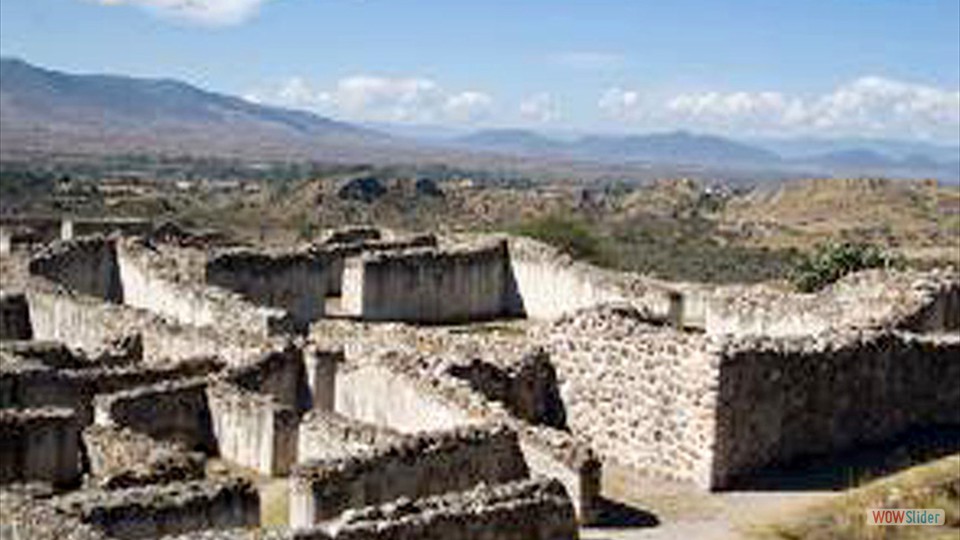
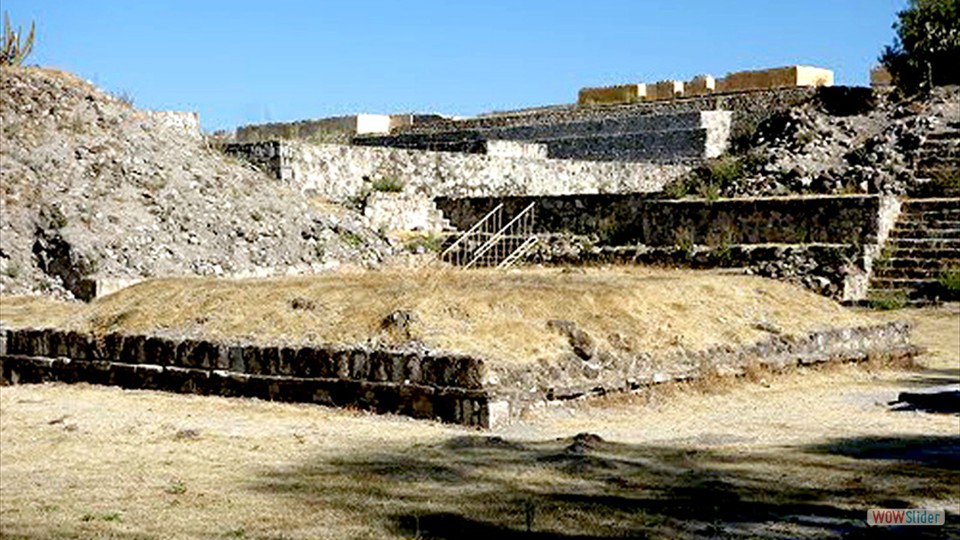
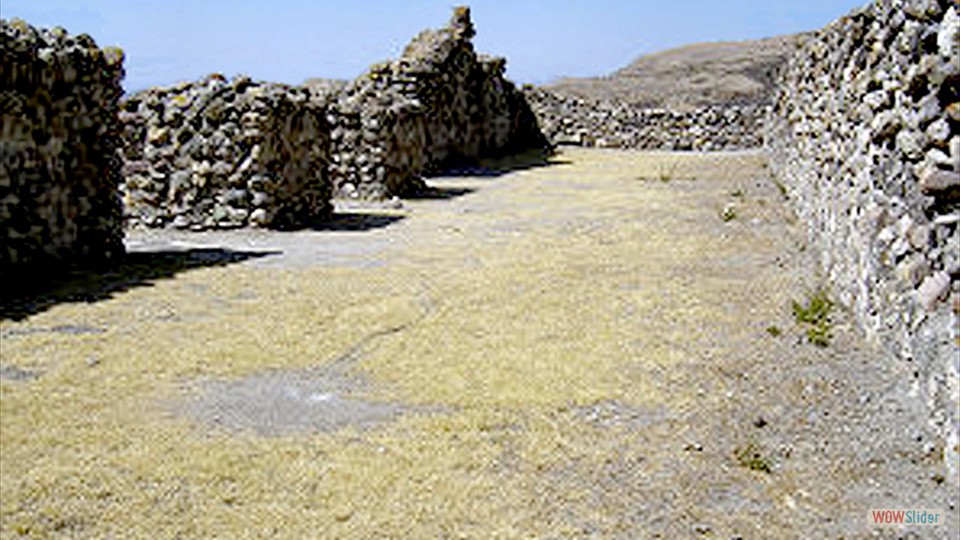
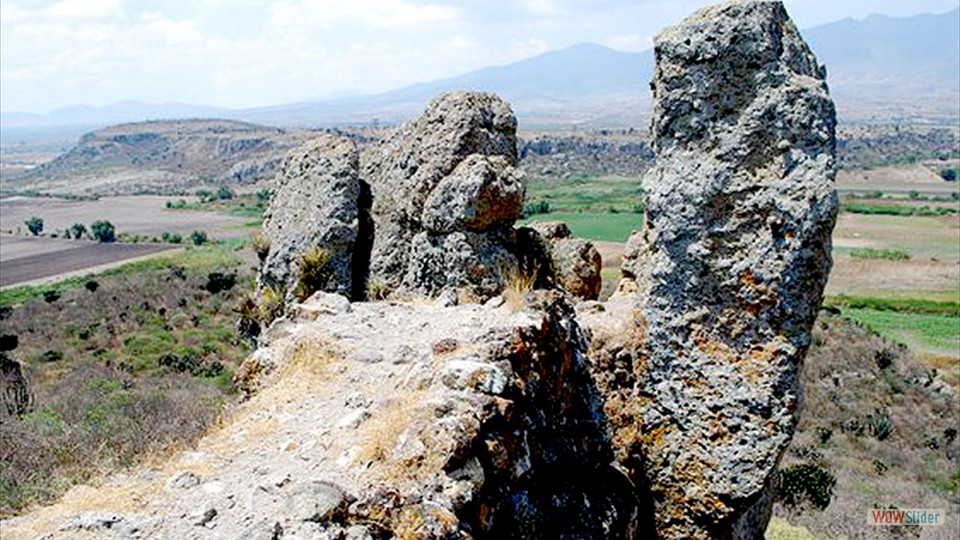
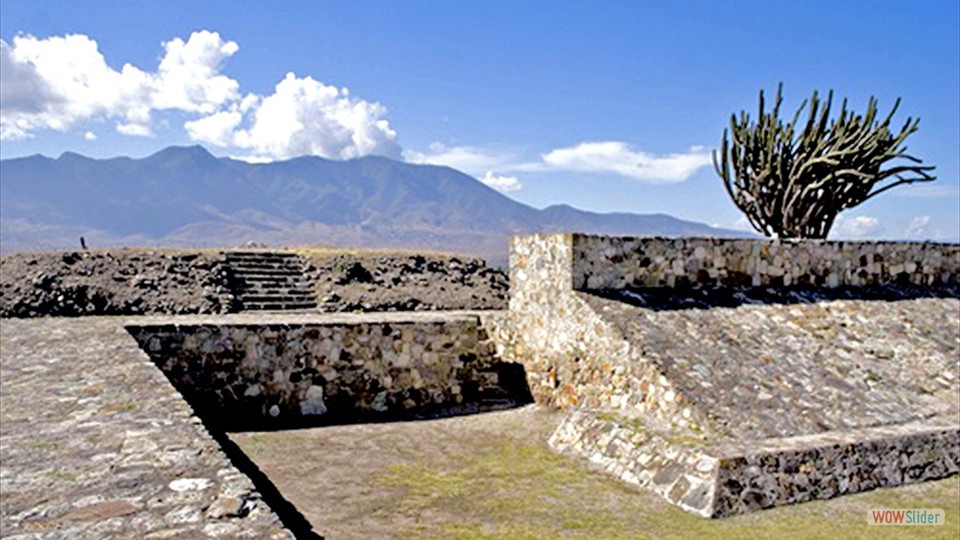
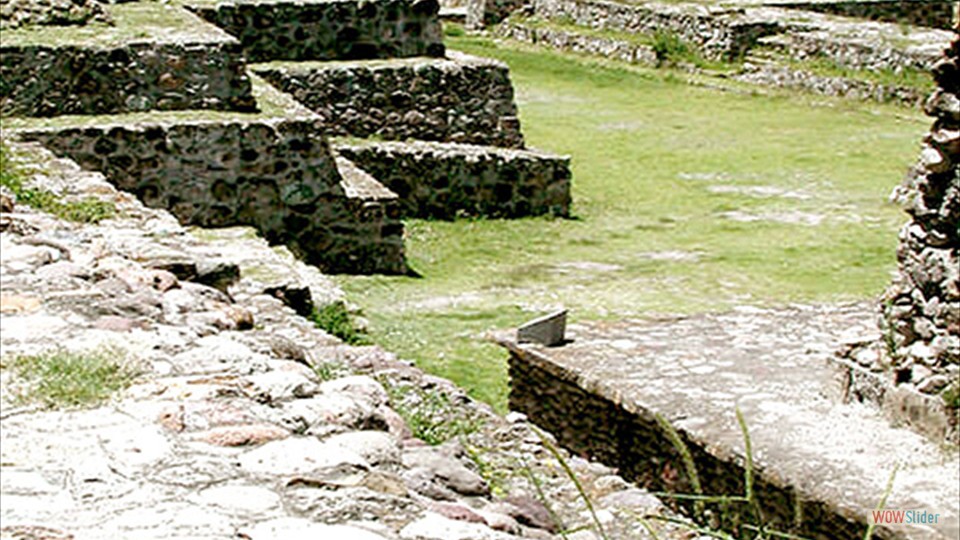

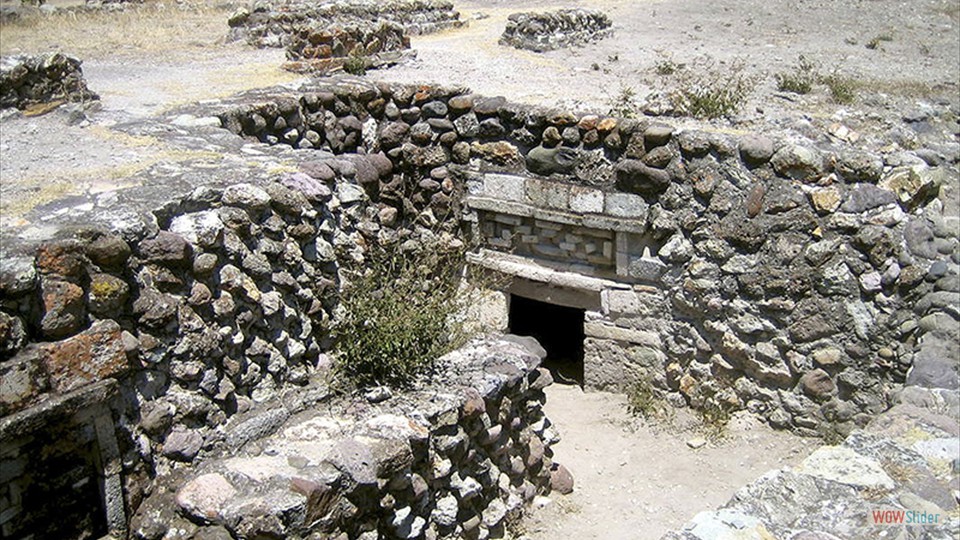
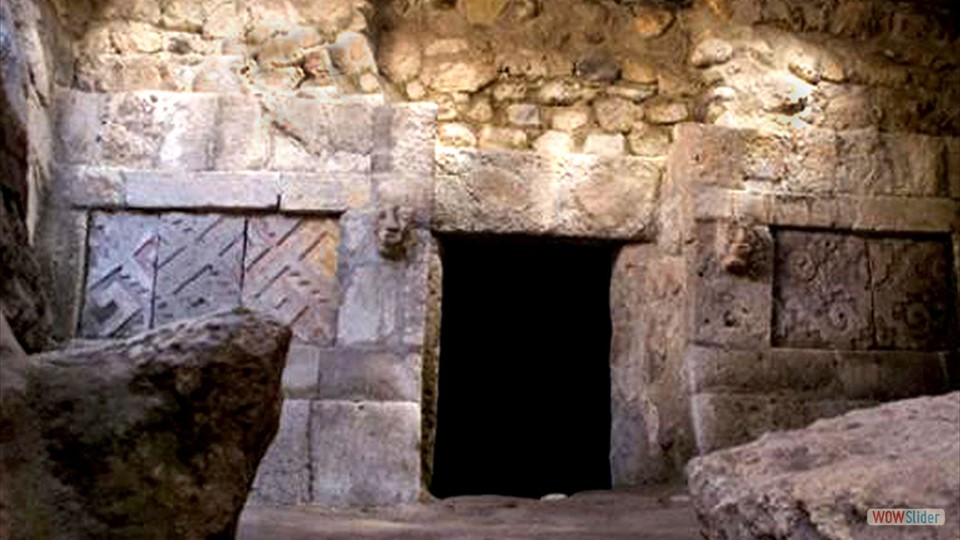
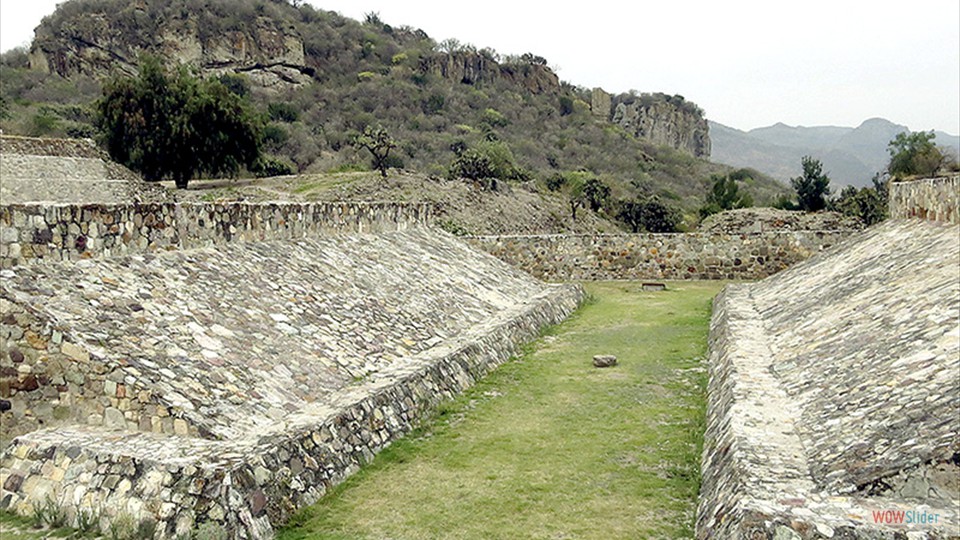
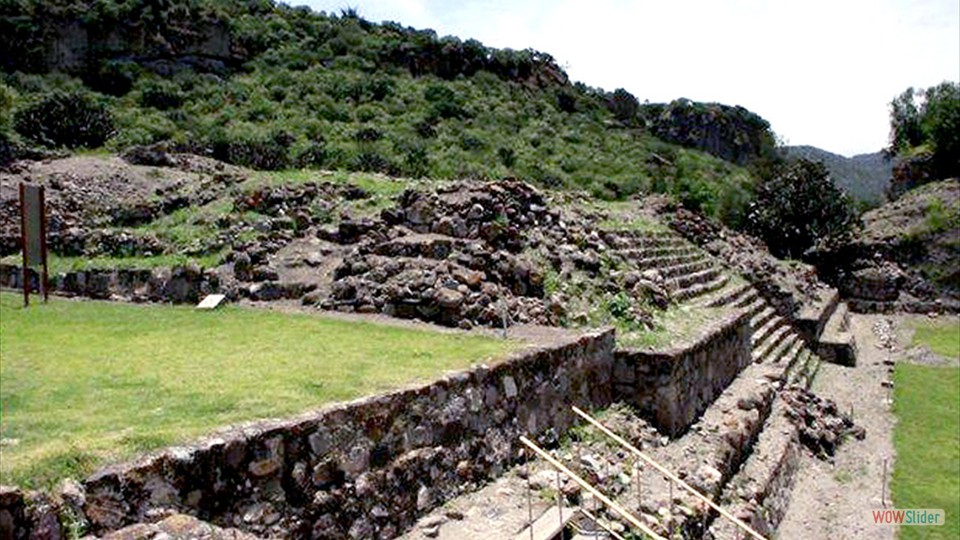
 1
1 2
2 3
3 4
4 5
5 6
6 7
7 8
8 9
9 10
10 11
11